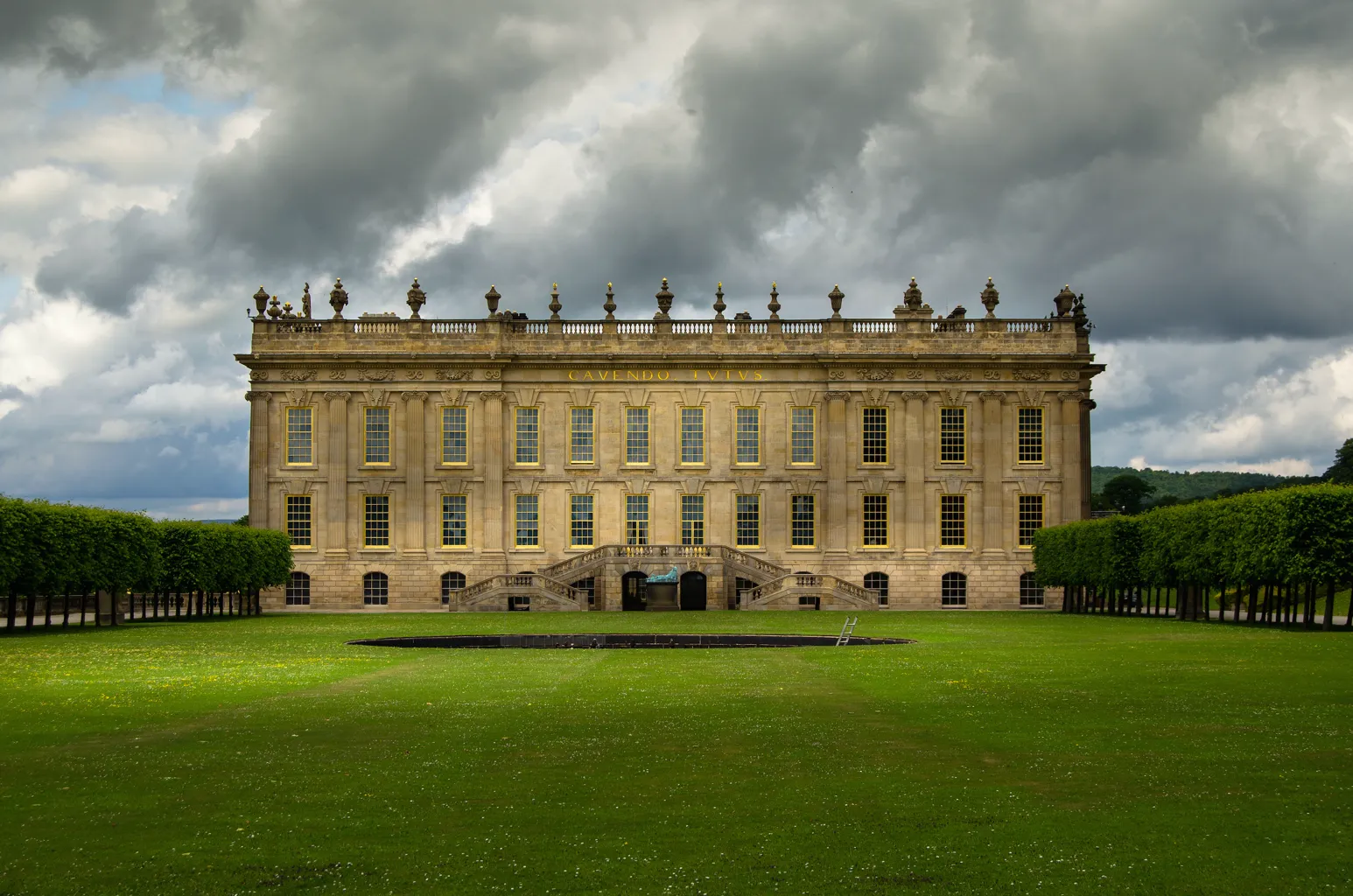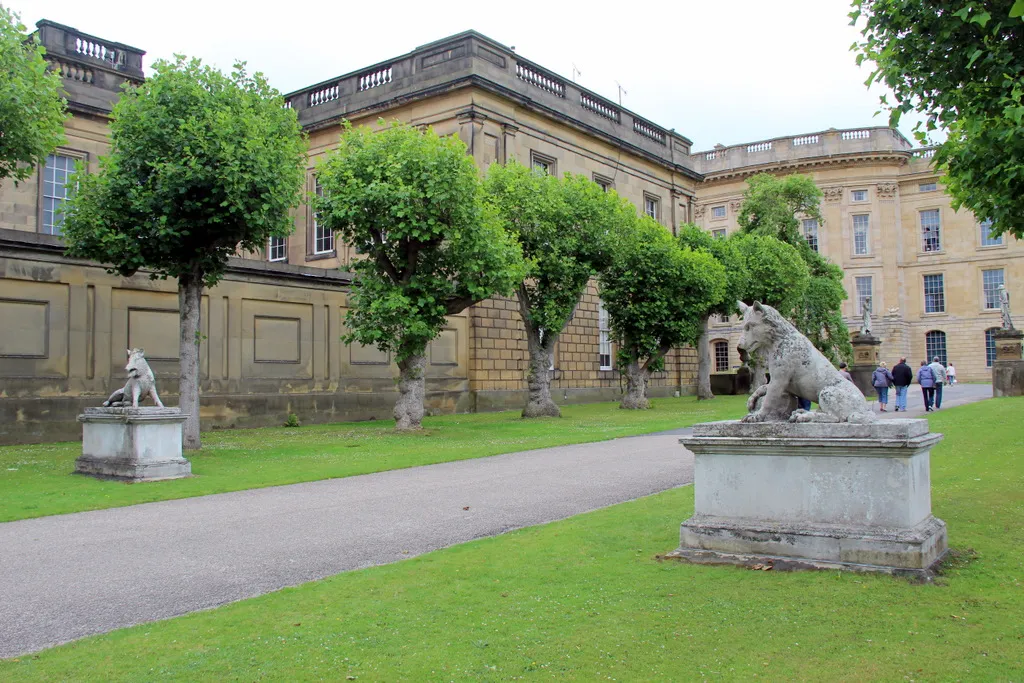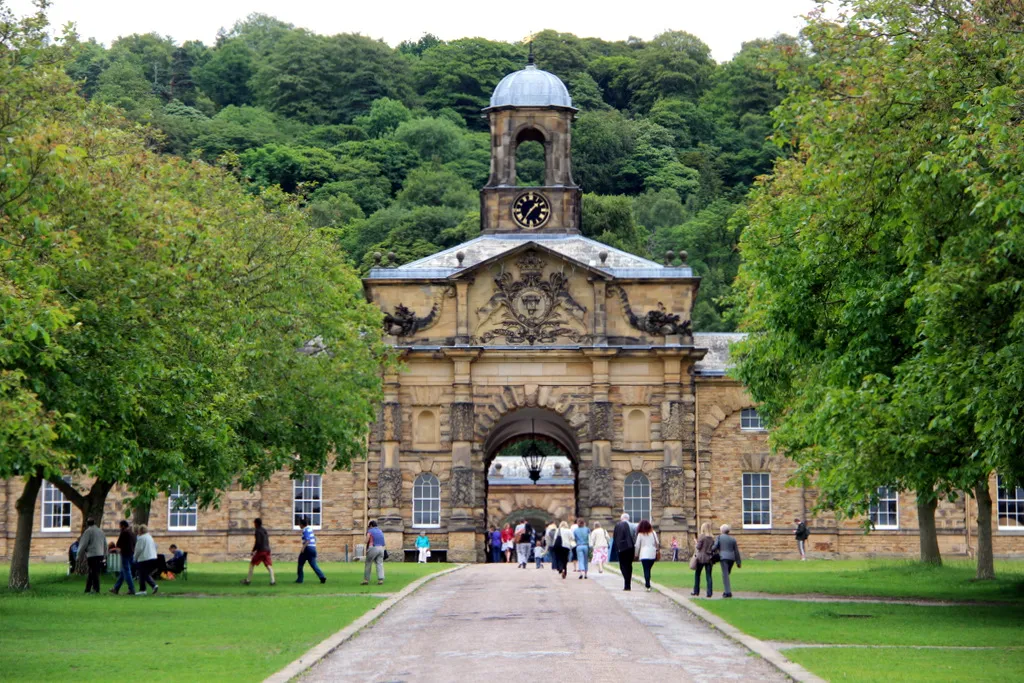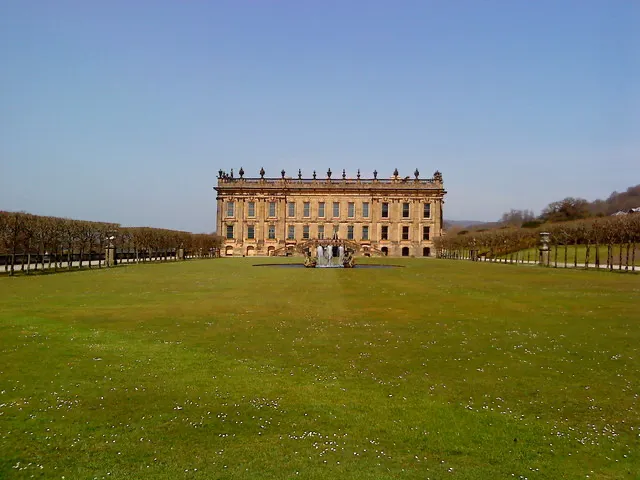Discovering Chatsworth House
Chatsworth House, a stately home in Derbyshire Dales, stands 4 miles northeast of Bakewell. This grand estate, 9 miles west of Chesterfield, has belonged to the Cavendish family since 1549. It sits on the east bank of the River Derwent, surrounded by parkland and wooded hills.
Get your dose of History via Email
A Treasure Trove of Art and History
Chatsworth House boasts major collections of paintings, furniture, Old Master drawings, neoclassical sculptures, and books. This 17th-century Grade I listed property underwent significant alterations in the 18th and 19th centuries. Between 2011 and 2012, a £14-million restoration project was completed. The Chatsworth House Trust, an independent charitable foundation, has managed the property since 1981.

Early History: 11th–16th Centuries
The name ‘Chatsworth’ comes from ‘Chetel’s-worth,’ meaning “the Court of Chetel.” In Edward the Confessor’s reign, a Norseman named Chetel held lands jointly with a Saxon named Leotnoth. After the Norman Conquest, the Crown took over, and by 1086, the Domesday Book listed Chatsworth as Crown property. The estate remained small until the 15th century when the Leche family acquired it. In 1549, Sir William Cavendish bought the property and, persuaded by his wife, Bess of Hardwick, settled in Derbyshire.
The Rise of Chatsworth
Bess began building a new house near the river in 1553. She completed it in the 1560s after Sir William’s death in 1557. George Talbot, Bess’s fourth husband, housed Mary, Queen of Scots, at Chatsworth several times between 1570 and 1571. Bess and Mary worked together on the Oxburgh Hangings during her stays. After Bess’s death in 1608, her eldest son Henry inherited the estate. Later, his brother William Cavendish purchased it for £10,000.

17th-Century Transformations
William Cavendish, the 3rd Earl of Devonshire, faced hardships during the Civil War. He reconstructed the principal rooms after the monarchy’s restoration. Thomas Hobbes spent his final years at Chatsworth, leaving behind many manuscripts. The 4th Earl, who became the 1st Duke of Devonshire in 1694, began extensive rebuilding. He reconstructed the south wing and the east and west fronts, creating a grand Baroque garden.
18th-Century Changes
The 2nd and 3rd Dukes of Devonshire added to Chatsworth’s art collection. They included paintings, Old Master drawings, prints, ancient coins, and sculptures. The 4th Duke employed Capability Brown to redesign the gardens in a naturalistic style. He also redirected the approach to the house and replaced formal gardens with a more natural look.

19th-Century Developments
The 6th Duke, known as “the Bachelor Duke,” transformed Chatsworth. He added a north wing, including a sculpture gallery, orangery, theatre, Turkish bath, and new kitchens. He entertained guests with hunting, riding, reading, and billiards. Queen Victoria and Charles Dickens were among the notable visitors.
Early 20th Century Challenges
Social changes and taxes impacted the Devonshires’ lifestyle. The family sold valuable books and land to pay off debts. The Great Conservatory was demolished to reduce costs. During World War II, Chatsworth housed Penrhos College, a girls’ school from Wales. The 10th Duke transferred Hardwick Hall to the National Trust to pay death duties.
Post-War Revival
In the 1950s, the 11th Duke and Duchess renovated Chatsworth, modernizing its facilities. They added bathrooms, rewired the building, and created new staff flats. The family moved back in 1959. In 1981, the Chatsworth House Trust was formed to preserve the house and its setting for the public’s benefit.
21st Century Renovations
The 12th Duke, Peregrine Cavendish, succeeded his father in 2004. A £32 million renovation, completed in 2018, restored stonework, statues, paintings, tapestries, and water features. Chatsworth remains a family home, managed by the Charitable Trust.

Architectural Marvels
Chatsworth House sits on sloping ground with the main entrance on the west front. The south and east fronts, rebuilt in the 1690s, are key examples of English Baroque architecture. The dramatic façade features ionic pilasters and a heavy entablature. The west and north fronts, possibly designed by Thomas Archer, include a central pediment supported by columns.
Rich Interiors
The state apartments, created by the 1st Duke, include the Painted Hall, Great Chamber, and State Drawing Room. The 6th Duke made significant 19th-century modifications, adding corridors and new living rooms. He also created a library and an Ante-Library for his book collection.
Modern-Day Chatsworth
Chatsworth House continues to attract visitors with its rich history and stunning architecture. The estate, managed by the Chatsworth House Trust, offers a glimpse into the lives of the Cavendish family and their enduring legacy. The gardens, featuring designs by Capability Brown and Joseph Paxton, add to the estate’s charm and historical significance.

